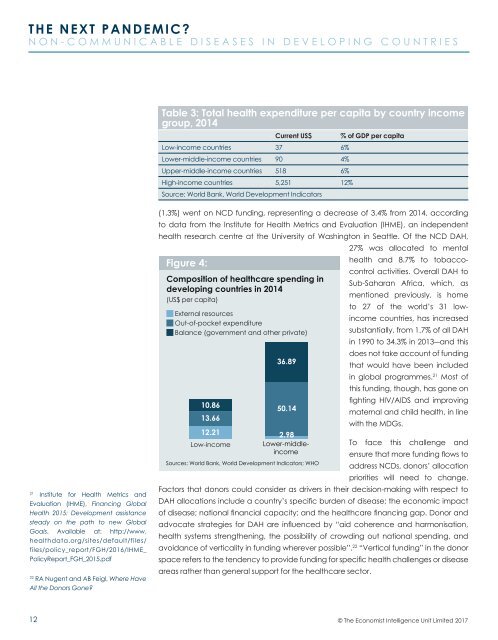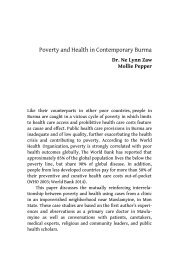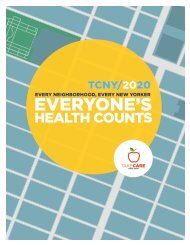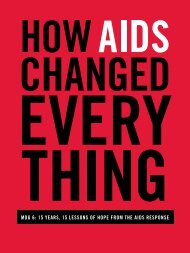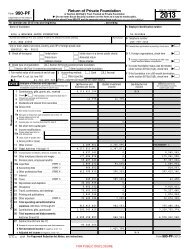THE NEXT PANDEMIC?
Thenextpandemic
Thenextpandemic
Create successful ePaper yourself
Turn your PDF publications into a flip-book with our unique Google optimized e-Paper software.
<strong>THE</strong> <strong>NEXT</strong> <strong>PANDEMIC</strong>?<br />
NON-COMMUNICABLE DISEASES IN DEVELOPING COUNTRIES<br />
Table 3: Total health expenditure per capita by country income<br />
group, 2014<br />
Current US$<br />
Low-income countries 37 6%<br />
Lower-middle-income countries 90 4%<br />
Upper-middle-income countries 518 6%<br />
High-income countries 5,251 12%<br />
Source: World Bank, World Development Indicators<br />
% of GDP per capita<br />
21<br />
Institute for Health Metrics and<br />
Evaluation (IHME), Financing Global<br />
Health 2015: Development assistance<br />
steady on the path to new Global<br />
Goals. Available at: http://www.<br />
healthdata.org/sites/default/files/<br />
files/policy_report/FGH/2016/IHME_<br />
PolicyReport_FGH_2015.pdf<br />
22<br />
RA Nugent and AB Feigl, Where Have<br />
All the Donors Gone?<br />
(1.3%) went on NCD funding, representing a decrease of 3.4% from 2014, according<br />
to data from the Institute for Health Metrics and Evaluation (IHME), an independent<br />
health research centre at the University of Washington in Seattle. Of the NCD DAH,<br />
27% was allocated to mental<br />
health and 8.7% to tobaccocontrol<br />
activities. Overall DAH to<br />
Figure 4:<br />
Composition of healthcare spending in<br />
Sub-Saharan Africa, which, as<br />
developing countries in 2014<br />
mentioned previously, is home<br />
(US$ per capita)<br />
to 27 of the world’s 31 lowincome<br />
countries, has increased<br />
External resources<br />
Out-of-pocket expenditure<br />
Balance (government and other private)<br />
substantially, from 1.7% of all DAH<br />
in 1990 to 34.3% in 2013―and this<br />
does not take account of funding<br />
36.89<br />
that would have been included<br />
in global programmes. 21 Most of<br />
this funding, though, has gone on<br />
fighting HIV/AIDS and improving<br />
10.86<br />
50.14<br />
maternal and child health, in line<br />
13.66<br />
with the MDGs.<br />
12.21<br />
2.98<br />
Low-income Lower-middleincome<br />
ensure that more funding flows to<br />
To face this challenge and<br />
Sources: World Bank, World Development Indicators; WHO<br />
address NCDs, donors’ allocation<br />
priorities will need to change.<br />
Factors that donors could consider as drivers in their decision-making with respect to<br />
DAH allocations include a country’s specific burden of disease; the economic impact<br />
of disease; national financial capacity; and the healthcare financing gap. Donor and<br />
advocate strategies for DAH are influenced by “aid coherence and harmonisation,<br />
health systems strengthening, the possibility of crowding out national spending, and<br />
avoidance of verticality in funding wherever possible”. 22 “Vertical funding” in the donor<br />
space refers to the tendency to provide funding for specific health challenges or disease<br />
areas rather than general support for the healthcare sector.<br />
12<br />
© The Economist Intelligence Unit Limited 2017


